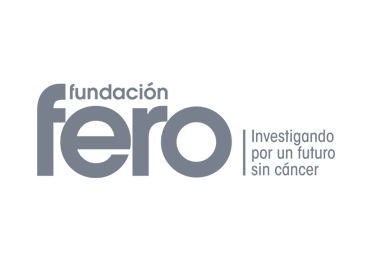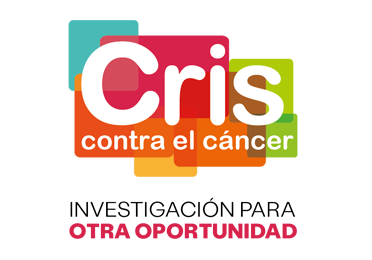
- Chemotherapy resistance is often driven by cancer cells entering into a slow-cycling or dormant state to evade therapy-induced cell death.
- Recently published in the journal Cell Reports, results of a VHIO-led study identify the overexpression of DPPA3 factor as a key regulator of “slow-cycliness” in colorectal cancer which could act as a predictive biomarker of chemoresistance and disease recurrence.
- The investigators have described a vicious feedback loop between hypoxia and DPPA3 overexpression which maintains the slow-cycling state of dormant cancer cells. Results suggest that the indirect blockade of this feedback mechanism could promise a new therapeutic strategy to combat colorectal cancer chemoresistance and destroy dormant cancer cells.
More than 1.9 million new colorectal cancer (including anus) cases and 935,000 deaths were estimated to occur worldwide in 2020, representing about one in 10 cancer cases and deaths. Overall, colorectal ranks third in terms of incidence, but second in terms of mortality (1). Intrinsic or acquired resistance to chemotherapy leads to disease relapse in many CRC patients, representing and unmet clinical need.
Chemotherapy attacks cells that proliferate uncontrollably. Some tumor cells can however stall the cell cycle to dodge therapy-induced cell death. Not only do these cells acquire chemoresistance by exploiting this non-mutational-driven mechanism, but they can also reenter the cell cycle—even years after treatment—to wreak their havoc by seeding disease relapse.
Results of a study co-led by Héctor G. Palmer, Principal Investigator of the Vall d’Hebron Institute of Oncology’s (VHIO, Vall d’Hebron Campus) Stem Cells and Cancer Group, and Isabel Puig, Senior Researcher of the same group, now published as an open access article in the journal Cell Reports (2), have identified DPPA3 factor (Developmental Pluripotency Associated 3) as a regulator of “slow-cycliness” and chemoresistance in CRC.
“The majority of colorectal cancer patients acquire relatively rapid chemoresistance, eventually leading to disease relapse,” states Héctor G. Palmer. “One of our research lines focuses on the identification of new mechanisms regulating disease progression and acquired resistance to seek out novel biomarkers and therapeutic targets against cancer recurrence.”
This present study is the result of the thesis work of Estefanía Cuesta and Cándida Salvans, both investigators of VHIO’s Stem Cells and Cancer Group.
“We studied the overexpression of DPPA3 in primary and metastasis colorectal cancer patient samples,” says Estefanía Cuesta, first author of this study together with Cándida Salvans “and observed that patients with high levels of DPPA3 relapsed more frequently than those without. DPPA3 overexpression is therefore a predictive factor of disease relapse driven by cellular plasticity rather than genetic alterations. Further, the high levels of DPPA3 observed in primary tumors were not found in metastasis, suggesting that DPPA3 is deactivated at some point during disease progression to enable chemoresistant metastatic cells to re-enter the proliferation cycle.”
The researchers considered two possible strategies aimed at controlling disease relapse. “On the one hand, we hypothesized that DPPA3 blockade during treatment with chemotherapy might prevent cells from adopting a dormant state and thus remain sensitive to therapy. The second potential strategy could be to maintain DPPA3 overexpression post-treatment to stop dormant cells from re-entering the cell cycle to seed relapse,” explains Isabel Puig.
However, according to computational models, due to its disordered structure it is not currently possible to design an agent that binds to and inhibits DPPA3 factor. “Aimed at indirectly blocking DPPA3, we therefore studied the vulnerabilities of cells expressing this factor,” adds Palmer.
A vicious circle between dormant cells and hypoxia
VHIO’s Stem Cells and Cancer Group has designed two cellular models that recapitulate the features of patient tumors that express high levels of DDPA3 and are resistant to chemotherapy. “Using these models, we have discovered that the hypoxia-DPPA3 axis—a vicious feedback loop where elevated levels of the HIF1 protein, a key regulator of hypoxia, maintains high levels of DPPA3 and vice versa—enables tumor cells to remain in a dormant state and acquire resistance to chemotherapy,” says Cándida Salvans.
The investigators have now described that the overexpression of DPPA3 predicts chemoresistance and disease relapse in CRC patients and identified HIF1 as a potential therapeutic target to deactivate the dormant state of CRC cells and sensitize them to chemotherapy.
A forced awakening to combat dormant cancer cells
Having discovered this mechanism, and considering the toxicity currently associated with HIF1 inhibitors, the next step will be “to use these cellular models to identify other approaches to break the vicious circle between DPPA3 and HIF1 and thus sensitize cancer cells to chemotherapy,” adds Puig.
“Using mouse avatars, it could be interesting to preclinically evaluate the efficacy of combining DPPA3-HIF1 inhibition with chemotherapy in xenografts over-expressing DPPA3,” concludes Héctor G. Palmer.
This research has been possible thanks to the support received from the Spanish Association Against Cancer (Asociación Española Contra el Cáncer – AECC), “la Caixa” Foundation, FERO Foundation (Fundación FERO), State Research Agency (Agencia Estatal de Investigación – AEI) and Carlos III Health Institute (Instituto de Salud Carlos III – ISCIII), CIBERONC Network for Cooperative Research in Oncology (Centro de Investigación Biomédica en Red Cáncer – CIBER), Olga Torres Foundation (Fundación Olga Torres), and the EU’s Horizon 2020 Research and Innovation Programme.
###
References:
- Sung H, Ferlay J, Siegel RL, Laversanne M, Soerjomataram I, Jemal A, Bray F. Global Cancer Statistics 2020: GLOBOCAN Estimates of Incidence and Mortality Worldwide for 36 Cancers in 185 Countries. CA Cancer J Clin. 2021 May;71(3):209-249.





















